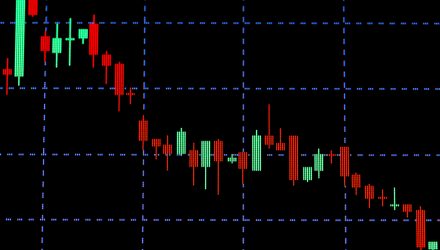Exchange traded fund investors should explore alternate strategies for a market that is stretching valuations to precipitous levels.
In the recent webcast, Afraid of a Market Pullback? Hybrid Approaches for Uncertain Times, Sandra Testani, Vice President, ETF Product and Strategy, American Century Investments, highlighted the benefits of preferred stocks, which are hybrid investments that share characteristics of stocks and bonds and offer the potential for high current income, higher credit quality, diversification benefits, and lower interest rate risk.
Testani explained that preferreds in a portfolio provide enhanced portfolio yield without significantly sacrificing credit quality, provide diversification away from traditional fixed income investments with less vulnerability to rising rates, and, for tax-sensitive investors, provide attractive after-tax yield as income on preferreds may be classified as qualified dividend income.
The ICE Exchange-Listed Preferred & Hybrid Securities Index benchmark has an effective duration of 3.69 years, a yield to maturity of 4.46%, and 50.5% of the index is comprised of investment-grade BBB-rated securities.
As a way to tap into this market, Rene Casis, ETF Portfolio Manager, American Century Investments, pointed to the actively managed American Century Quality Preferreds ETF (QPFF).
“We believe benchmark portfolio construction, which is driven by the market capitalization of underlying issues and is agnostic to various risks and structural inefficiencies, can lead to unintended performance outcomes,” Casis said.
“Strong risk-adjusted results can be achieved through a combination of quantitative and fundamental investment approaches that focus on identifying strong issuers and the optimal issues.”
The American Century Quality Preferreds ETF has a quality focus that overweights issuers believed to offer more sustainable dividends throughout market cycle; employs sector-specific assessments to address large benchmark banking exposure; and monitors credit, liquidity, rate, and structural risks to mitigate sharp price declines.
QPFF tries to identify high quality issuers by eliminating issuers with the highest likelihood of suspending dividends in challenging market environments and focusing on earnings quality and market capitalization. The fund managers also employ sector-specific screens to further refine the investment universe to account for idiosyncrasies among banking and non-banking sectors and optimize remaining issuers based on valuation and yield. The strategy seeks the securities with the best structural features, accounting for market inefficiencies that may impact relative valuation among issues. Lastly, the ETF ensures alignment with aggregate portfolio risk/return objectives, liquidity and portfolio constraints.
The desired outcome is a preferred portfolio with higher quality and higher profitability issuers that can sustain dividends throughout the market cycle, lower exposure to cyclical sectors, larger market capitalization, and attractive portfolio yield without significantly sacrificing credit quality.
Testani also underscored the benefits of convertibles, fixed income securities with an embedded option to convert to equity. These assets offer the potential for attractive risk-adjusted returns, upside potential with limited downside capture, low sensitivity to interest rates, and yield advantage relative to growth equities.
Testani argued that convertibles in a portfolio provide exposure to growth equities with higher yield and lower downside risk, and they provide diversification away from traditional fixed income investments, with less vulnerability to rising rates. Convertibles tend to be issued by cyclical, growth-oriented companies. Many of the issues are not rated and, due to call features, may have very short durations.
For convertible bond exposure, the American Century Quality Convertible Securities ETF (QCON) is an actively managed convertible bond portfolio that focuses on quality, industry diversification, and balancing beta exposure to optimize risk/return potential for investors seeking a diversifying alternative strategy.
The American Century Quality Convertible Securities ETF overweights issuers with a stronger earnings profile, stronger balance sheets, and higher-than-average credit ratings; targets a more balanced beta range for the portfolio to mitigate sharp price declines; and aims to diversify across industries and sectors to address benchmark concentration.
QCON’s bond-like convertibles segment eliminates issuers with highest default risk and optimizes issuers based on valuation and yield. The ETF’s equity-like convertibles portion eliminates issuers with lowest profitability and lowest realized growth, instead optimizing issuers based on profitability and growth. The portfolio then seeks the securities with the best structural features, accounting for market inefficiencies that may impact relative valuation among issues. Lastly, it ensures alignment with aggregate portfolio risk/return objectives, liquidity, and portfolio constraints.
The desired outcome is a convertible bond portfolio with higher quality issuers, lower exposure to cyclical sectors, and lower exposure to highest and lowest beta securities.
Financial advisors who are interested in learning more about alternative strategies can watch the webcast here on demand.
